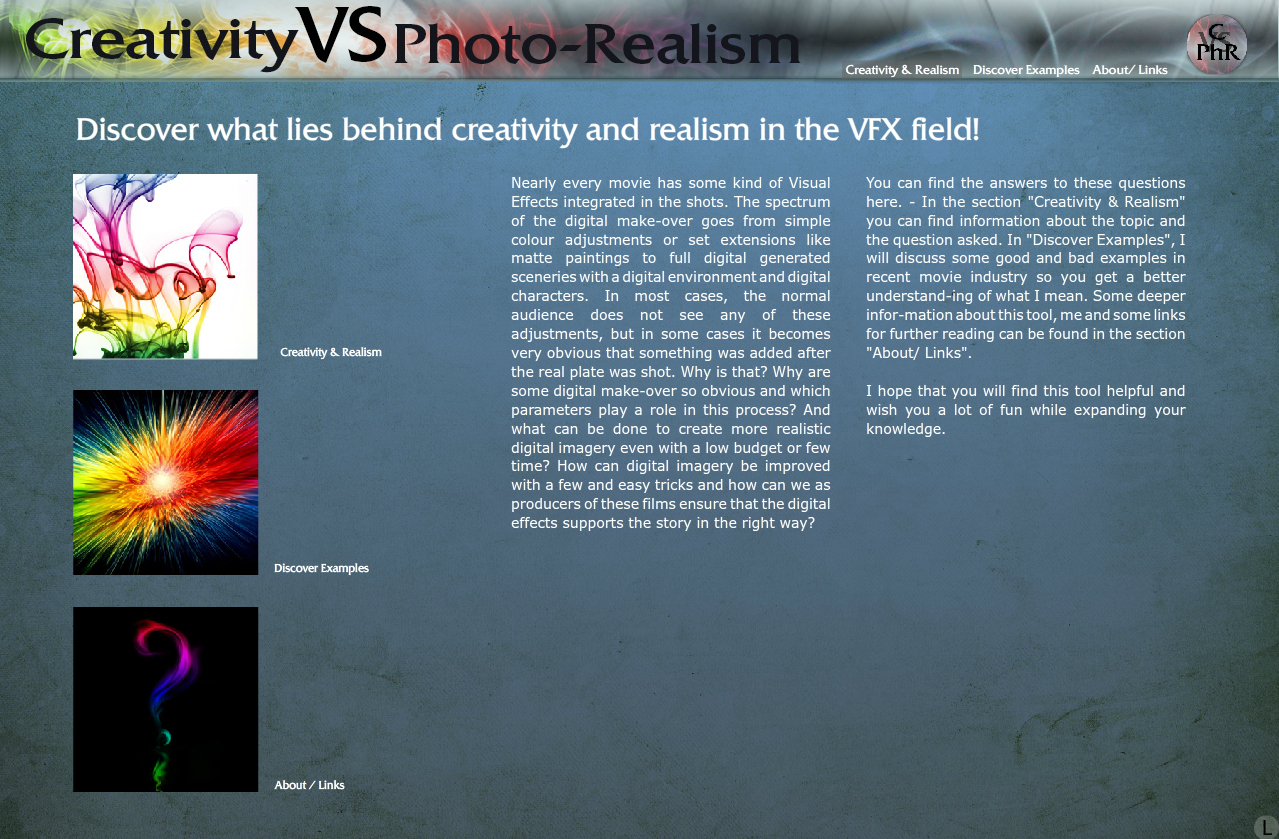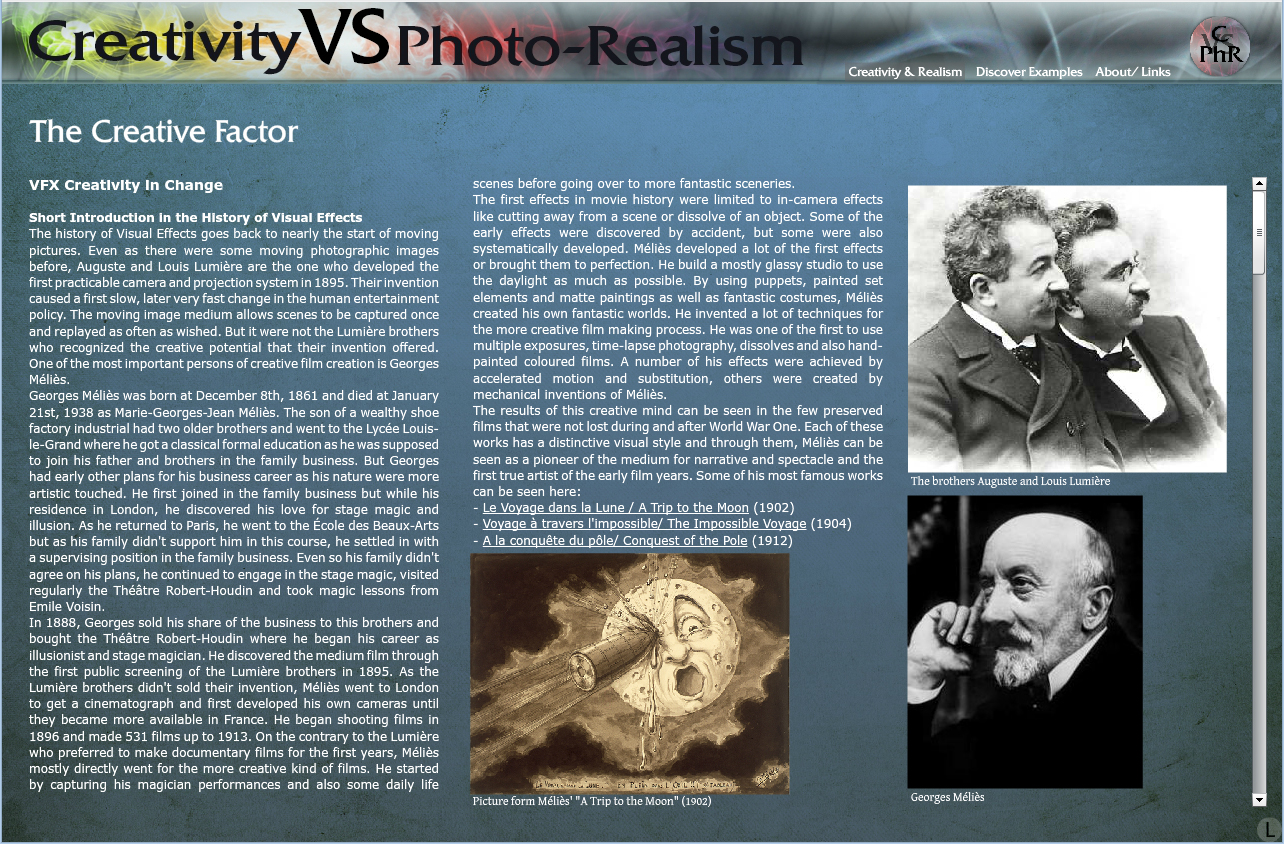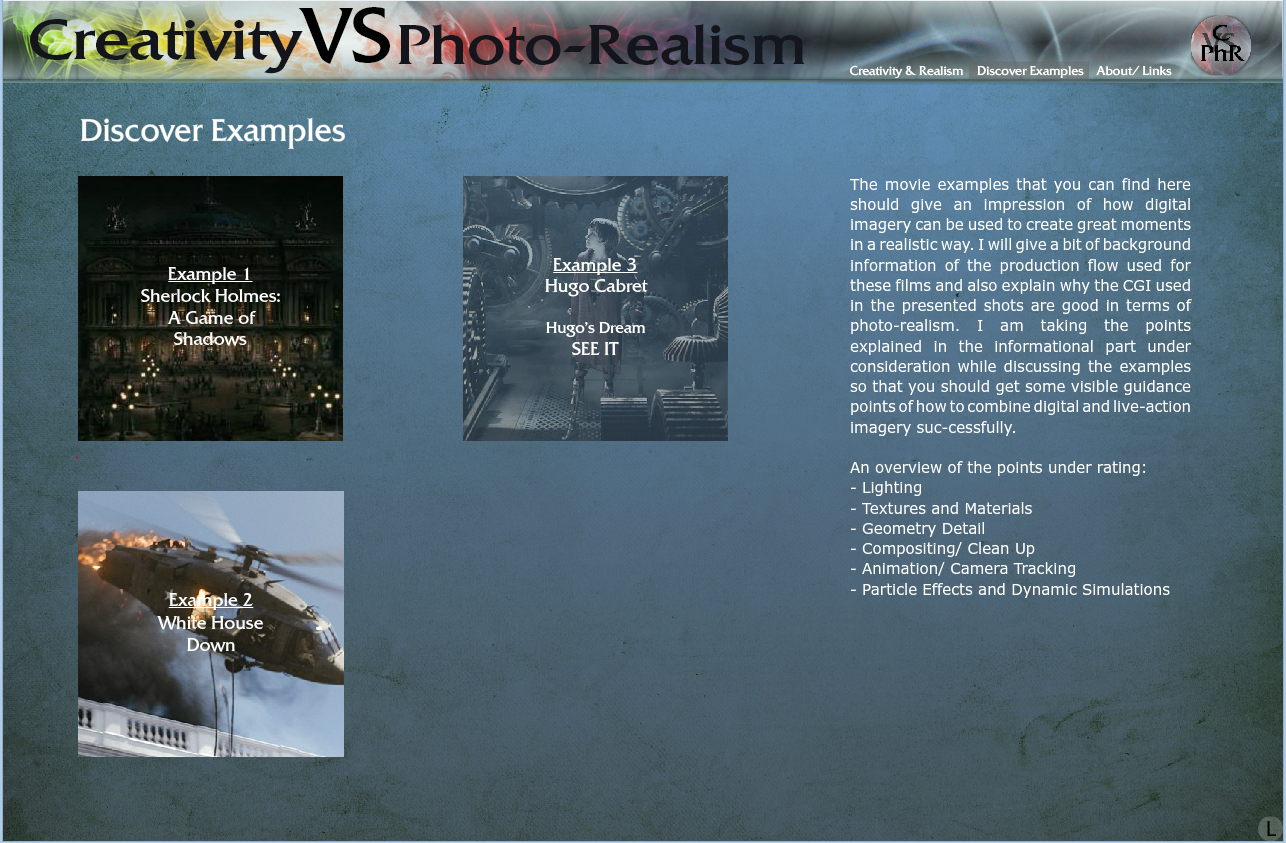Creativity vs. Photo-Realism Guide
Master Thesis

The results of my research to this topic can be explored in this guide which I created with the intention to bring the topic closer to the public. Click on the picture above to start the guide.
This guide was created as practical part of my master disseration "Creativity vs. Photo-Realism" in the study course "Leadership in the Creative Industries".
The topic is focused on the question how realistic today's visual effects are and what creativity as well as photo-realism mean a VFX oriented production.
Most of today's movies and series have some digital make-overs that the general audience does not normally notice, but in some cases it becomes very obvious that something was added after the real plate was shot.
Why is that? Why are some digital make-overs so obvious and which parameters play a role in this process? And what can be done to create more realistic digital imagery even with a low budget or few time? How can digital imagery be improved with a few and easy tricks and how can we as producers of these films ensure that the digital effects supports the story in the right way?
All these questions led to this master dissertation and the results were summarized in this tool to make them useful for interested people.
Short Overview
General Sections

The guide is split in two section (a third if you count 'About & Resources'):
Part 1 "Creativity & Realism" is the theoretical elaboration about the topics 'Creativity' and 'Realism'.
Part 2 "Discover Examples" takes three movie examples to closer inspection.
Part 1: Realism & Creativity

The theoretical dissertation is split in four sections:
1. The Creative Factor
2. The Realism Factor
3. Evaluating Images for Realism
4. Creativity & Realism Combined
The first two section give an overview of the historical development and an understanding of the topics. Section 3 & 4 take the focus to the task at hand: finding a base to analyse digital created images for realism and explaining the factors to achive more realistic computer genereated images.

Part 2: Discover Examples

The second part takes three movie examples to give an impression of how digital imagery can be used to create moments in a realistic way. Taking the results of the theoretical dissertation under consideration for evaluating the movies, you can get an impression of how to combine digital and live-action imagery successfully.
I hope very much that you find this guide tool useful. On the left you can get an impression without starting the guide itself.
Please let me know if you think something could be better or just what you think about this guide and the topic.
